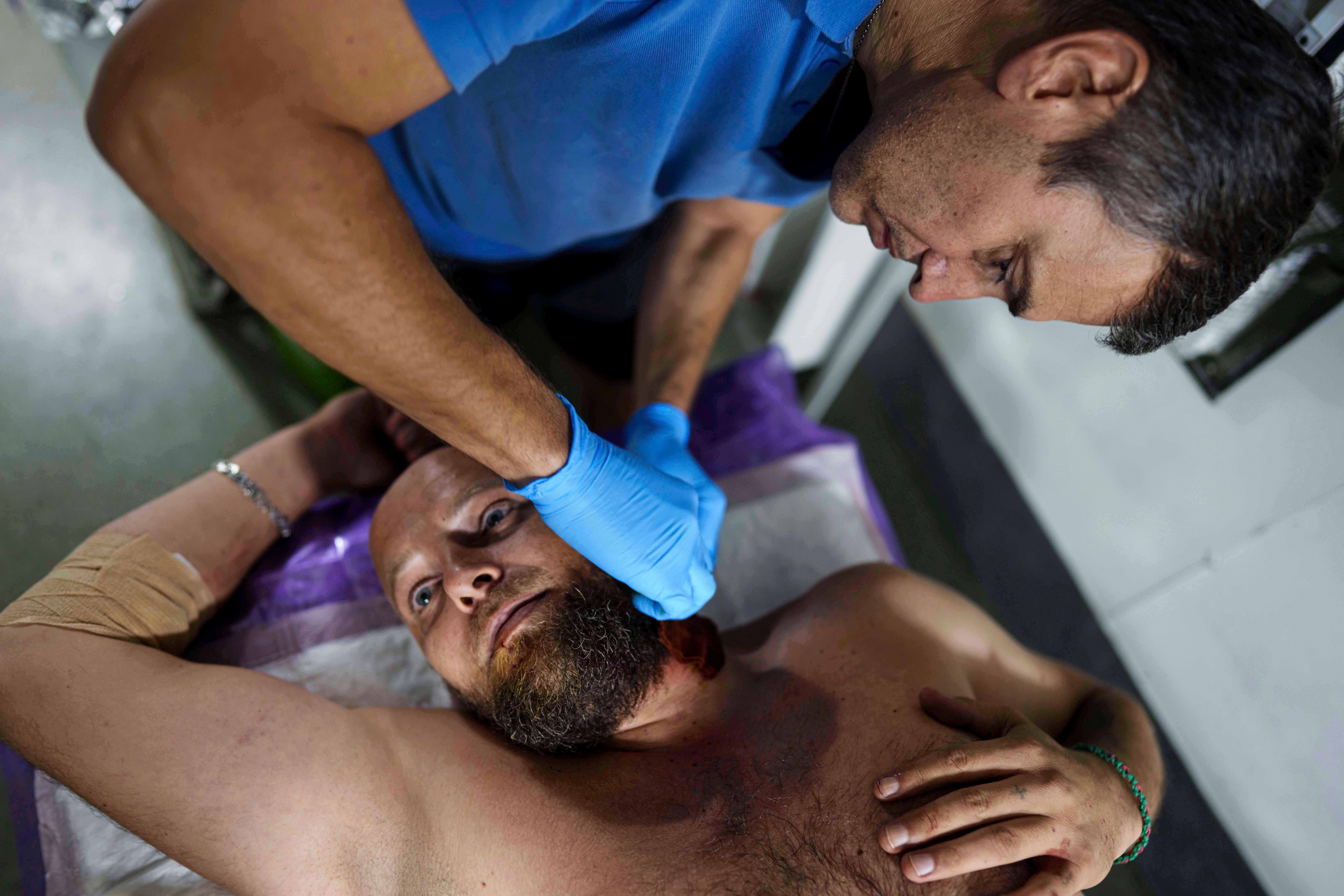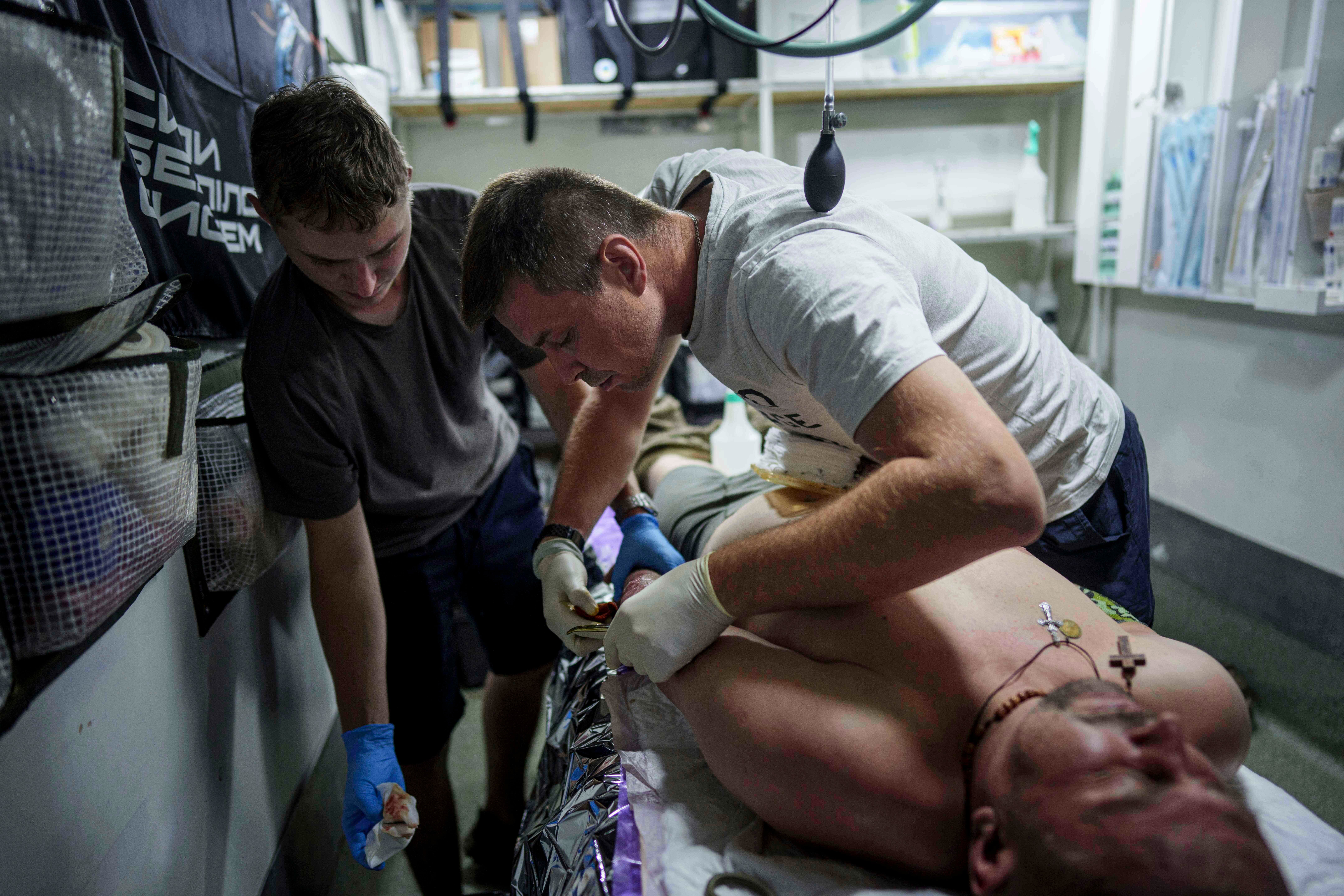In eastern Ukraine, quiet nights in dark corridors of a front line medical position can break in an instant. The doctors woke up from Sleep Rush to meet another rolled stretcher of the Donetsk front.
They work with urgency – thoracic compressions and tightened orders – until it becomes clear that the soldier arrived too late. The room is silent while his body is sealed in a white bag.
He could not be saved, said the anesthesiologist because the evacuation took too long. As he reached the stabilization point, he was already dead.
This was not an isolated case, but part of a broader change in war where medical evacuation has become increasingly difficult.
“Because of the drones … which can reach far, the danger is there for the injured and now for the crews that work to get them out,” said Daryna Boiko, the anesthesiologist of the “ULF” medical service from 108th Da Vinci Wolves Battalion. “This is why the main difficulty is now transport.”
In the first months of the large -scale invasion of Russia, evacuation vehicles could reach almost the front line, giving the injured a better chance of survival.
From now on, the intensive use of first -person drones (FPV), which allow an operator to see the target before strike, transformed the areas up to 20 kilometers (12 miles) of the front line in the killing areas. Doctors say they haven’t been shot for months, and most injuries are now coming from FPV.
Drones are the most dreaded weapon, both because of their precision and because they reduce the chances of survival for those already injured by complicating the evacuation.
For the army in the number of Ukraine, this makes preservation of the crew even more difficult.

The growing use of FPV has also made it more difficult to move the wounded between the points, said commander of the 59th Brigade Medical Unit with an indication of a Buhor call, who spoke under the cover of anonymity for security reasons.
“Everything becomes more difficult-the work must be more mobile, the way we make changes and the level of security changes,” he said.
When asked if these conditions had increased mortality among the injured, he replied: “Significantly. There is nothing you can do. Everything burns these FPV – everything, even the tanks. ”
He explained that the ammunition carry a charge of a grenade powered by rockets – a gun in the shoulder fire that launches an explosive designed to pierce armored vehicles. When exploding, a melted metal jet and fragments enter the cabin at extreme temperatures. The impact can cause anything, from minor cuts and burns to serious injuries, including amputations, depending on where the fragments have reached and their size.
Buhor said that so-called and self-evacuation are now highly highlighted during the training, but the existence of the killing area means that soldiers can be stuck in position for days or weeks-especially if an injury is not immediately fatal.

When Artem Fursov arrived at the stabilization post late at night with three other soldiers, Buhor inspected his injuries and praised the bandage on his arm, asking him who had done it. It was the work of a soldier colleague – and an effective self -example, said Buhor.
Fursov, 38, was injured on August 4 by an explosive fell from a drone, but he only reached a medical position five days later. To get safe, he had to walk for several kilometers. A small wooden cross that he wore under his clothes throughout the time now hangs against his chest.
“You can’t even raise your head there. It is already a robot war,” he said about the front line. “And the Russians come as if it were their own backyard.”
Valentyn Pidvalnyi, a 25 -year -old assault soldier injured in the back by bursts of shells, said that a month on the posts in 2022 was easier than trying to survive a day now as a infantry.
“It is a very hard sector,” he said, “but if you don’t destroy them, they will take the line of trees, then the city, then the whole region.”

Buhor has been working in the Pokrovsk region since the end of 2022. When troops are forced to withdraw, stabilization points must also move. In the past two and a half years, Buhor and his team have moved 17 times.
They left their previous location to the sound of FPV drones.
Other stabilization points face the same situation.
Boiko of the “ULF” medical service recalls that at the beginning of winter – when the stabilization point was still in Pokrovsk – there were still ball injuries. This meant that there was more direct contact between the infantry, the first line of defense, on both sides.
Months later, the situation had radically changed.
They try to protect themselves as much as possible – limiting movements, using camouflage, equipping all vehicles with electronic war systems. Their evacuation teams only come out in bulletproof vests and helmets.
“We are trying to save ourselves and wounded them, doing everything possible to hold our position as long as possible. If we have to go back further, the evacuation path for the wounded becomes longer-and for those in critical condition, which can be fatal, “she said.

